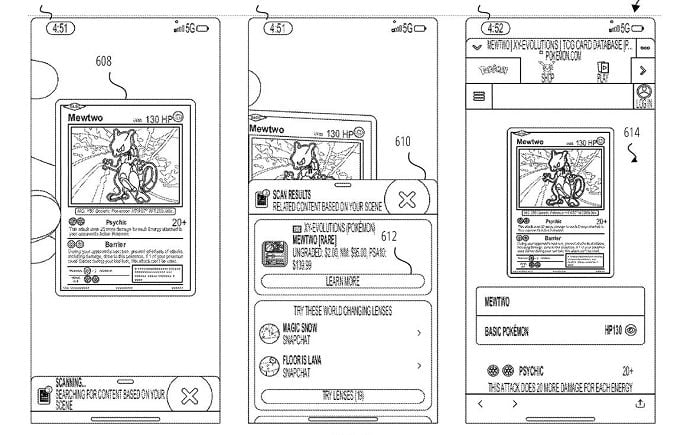Everybody loves to watch the guys from “Pawn Stars” lowball some desperate chump into giving up his family heirloom for a quick buck.
And now, it looks like Snapchat might be looking to move into a similar area, with a new patent filing showing that Snap’s developed an “image based valuation system” which would enable users to get an estimate of any item’s worth (within reason), by scanning said item via the Snap camera.

As you can see, in this example, a user has scanned in a Pokemon card, which Snap’s system then scans to find examples from across the web, from which it can then provide a price estimate, based on the basic identifiers of the scanned item (i.e. it can’t account for condition, authenticity, etc.).
As explained by Patent Drop:
“Snap’s system relies on computer vision to identify items, detect their quality and assign value to them. So, a user could flash an item in front of the camera, specifically noting that it can be a collectible item, like a “trading card or comic book.” The system will classify the item by accessing a “a repository that corresponds with the object class,” though it doesn’t divulge too many details about where this repository is located and what items are in it.”
So it’s not entirely clear where Snap will be pulling its valuations from, though eBay, of course, is the main source used by collectors for most items.
Based on this, the system would then provide a valuation of some sort, which could be handy for collectors, or for those looking to make some quick cash on old items, without coming in to see Rick Harrison at his Las Vegas shop with no valuation in mind (because he can sense it, and he will lowball you to heck as a result).
As an amateur collector myself, I can see how this could be valuable, using Snapchat’s advanced scanning tech to provide more immediate valuation info, as opposed to having to trawl through eBay to find comparative listings. If the system is able to detect certain variables and elements, with minimal effort, that could be a good way to get that info quickly, while it would also help Snapchat to better understand a users’ interests for future content and ad targeting.
It doesn’t seem like it would become a major element for Snap, but depending on the results it provides, it could be a valuable component, for a range of niche groups, which could expand Snap’s utility, and as noted, improve its ad targeting databanks.
There’s no word at this stage as to Snap’s plans for the project, and whether it’s still in development. But it could make Snap a better platform for targeting collectors, with added info on highly engaged users in different niches.



